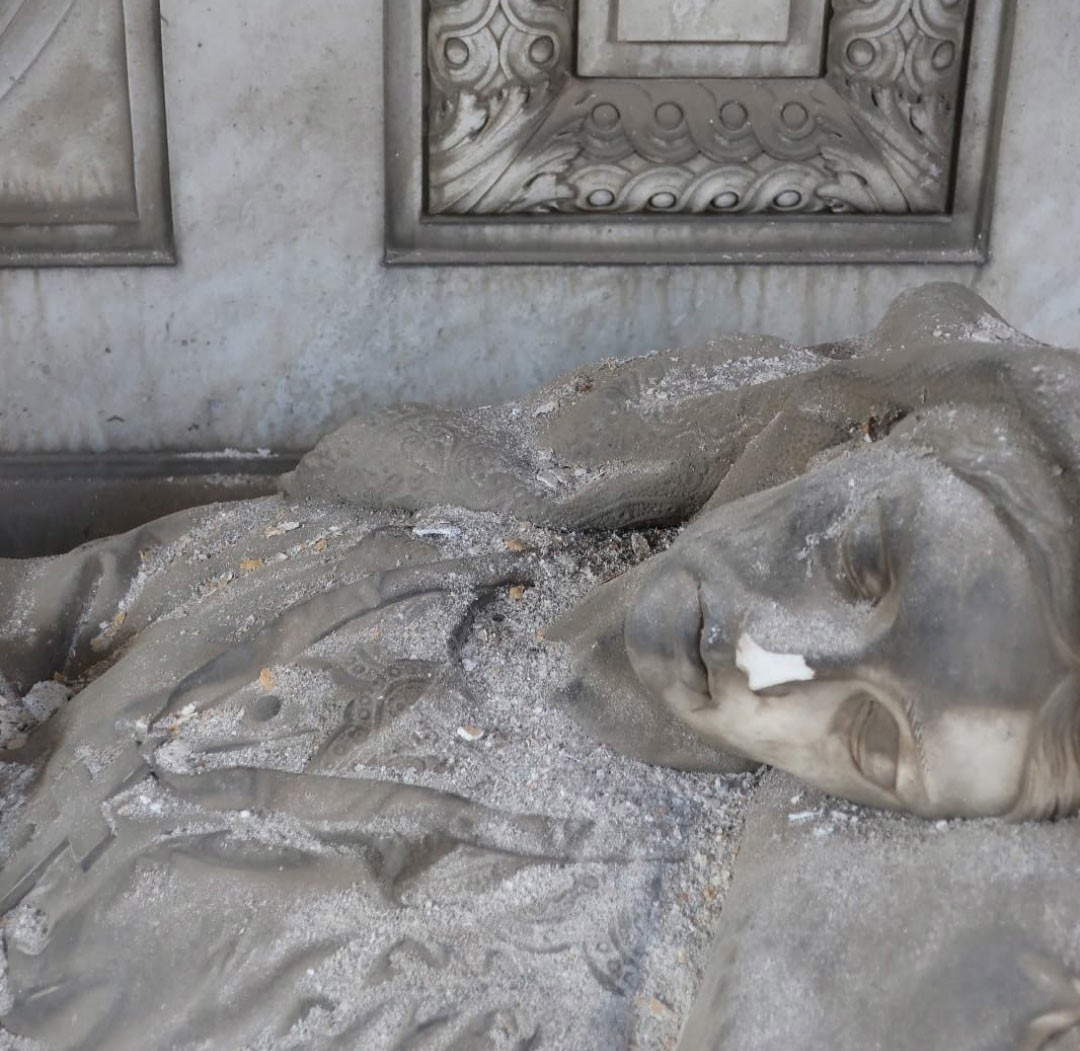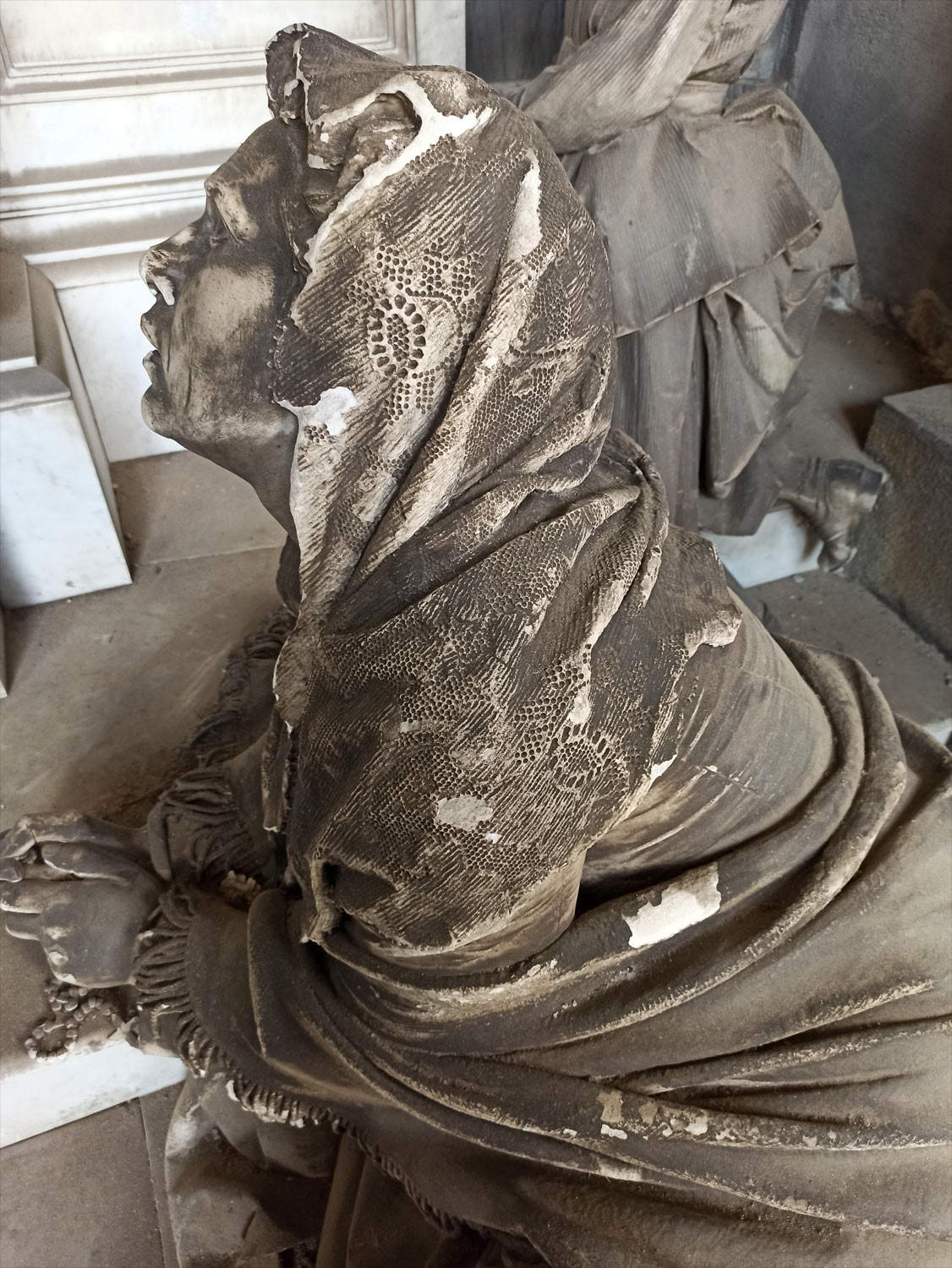I recently visited the monumental cemetery in Staglieno, Genoa. The situation is truly tragic, due to the very poor condition of most of the funerary monuments.
Staglieno was the testing ground for some of the most important sculptors (not only in the city, but throughout Italy) from the mid-nineteenth century to the early twentieth century. Santo Varni, Giovanni Scanzi, Tito Sarrocchi, Giulio Monteverde, Leonardo Bistolfi, and Francesco Messina, among others, contributed to the creation of a formidable open-air museum that was a model nationwide.
A testimony to the wealth of the most important Genoese families, the Genoese cemetery is inescapable for understanding not only the artistic taste of the time (and thus which sculptors were most in vogue) but also the different perceptions of death, which changed depending on the years and the social class of the patrons.
The importance of Staglieno for contemporaries is attested by the various nineteenth-century guides to the cemetery and by the numerous articles in city periodicals (from the “Caffaro” to the “Cittadino” to the “Gazzetta di Genova”) that passionately announced and reviewed the tombs that had just been unveiled to the public. From the interventions of master Santo Varni (1807-1885), still linked to neoclassical and purist solutions, to the first monuments, above all, by Augusto Rivalta, Emanuele Giacobbe, Agostino Allegro and Giovanni Scanzi, who in the early 1970s inaugurated the phase defined by Franco Sborgi as “bourgeois realism,” these sculptures offer a complete panorama of the stylistic, cultural and even economic-social changes in Genoa in the second half of the 19th century. Not to mention, then, the works most influenced by new twentieth-century trends, first and foremost Art Nouveau (thus Bistolfi, but also notable local artists such as Edoardo De Albertis).




It was precisely with Sborgi’s death in 2013 that studies on 19th-century Ligurian sculpture came to an almost complete halt.
Here, then, is the situation as it appears today: almost all of the monuments are blackened, covered with guano and rubble or, if it fits, plaster. The few that can be admired in good condition have been restored on private initiative, almost always foreign, and shine, Carrara white, among the general grayness. Some marbles are even permanently damaged, some faces scratched irreparably, some angels’ wings fatally broken.
It hurt a lot to see such celebrated works as theOneto Angel made by Giulio Monteverde (1837-1917) in 1882 (and replicated all over the world, even in a tattoo of footballer David Beckham) completely altered by the blackening of the marble, or very elaborate monuments, which have in the skillful integration of sculpture, architecture and ornamentation (according to a neo-Renaissance taste well present in the city, for example in the sumptuous Basilica of the Immaculate Conception on Via Assarotti) their strong point, such as Giovanni Battista Villa’s Rivara Tomb of 1895, totally abandoned to themselves and accompanied, perhaps, by a few vases with plastic flowers dating from the 1880s.
It is therefore necessary to do something as soon as possible, first by preparing the first restorations for the now heavily compromised monuments, secondly by encouraging scientific research in this area, which unfortunately still suffers from strong prejudices. Already guided tours are being organized, which, unfortunately, are not enough to raise public awareness of a serious and urgent problem in the debate around the preservation of Genoa’s artistic and cultural heritage.
In spite of everything, however, and in spite of the seemingly depressing fact of a (mostly this) visit to the cemetery, the time has not yet come for my hope for a new life for Staglieno to lie forever among its sculptures: it is still possible to restore dignity to this fundamental place, a flagship of the national nineteenth century.
Warning: the translation into English of the original Italian article was created using automatic tools. We undertake to review all articles, but we do not guarantee the total absence of inaccuracies in the translation due to the program. You can find the original by clicking on the ITA button. If you find any mistake,please contact us.